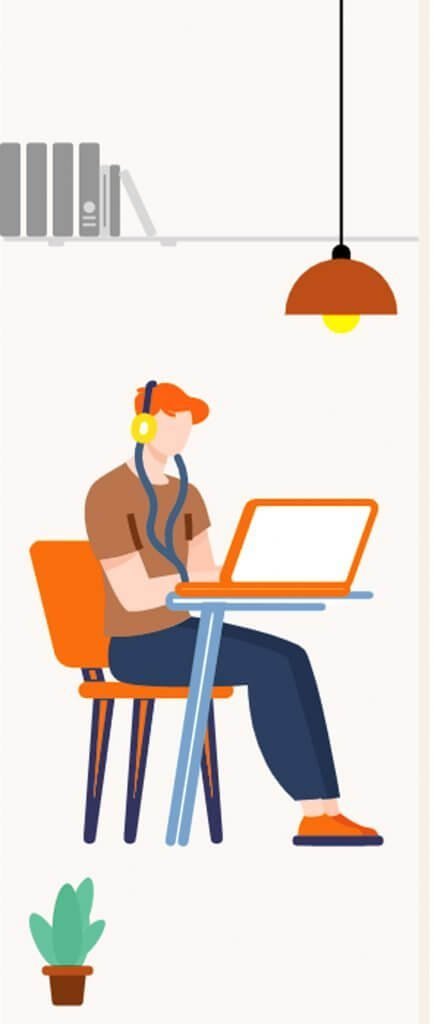1. Title of the Practice
Enhancing knowledge spectrum through interdisciplinary approach and peer to peer learning.
2. Objectives of the Practice (100)
- To prepare students for real-life challenges encountered in interdisciplinary settings.
- To make students experts in their chosen fields and also stimulate them to acquire knowledge of diverse fields. .
- To instil and promote interdisciplinary approach among students for adoption of the latest technological innovations.
- To initiate and strengthen peer-to-peer culture as students are more adapted to learn from peers.
- To provide a comprehensive learning environment to the students for skill development.
- To provide a wide range of learning platforms to equip each and every student with the updated knowledge in the field of technology.
3. The Context (150)
The present curriculum, designed by the affiliating university, doesn’t reflect interdisciplinary learning. Additionally, the current competitive scenario in education discourages a composite work culture based on cooperation and coordination. Contrary to this, the industry demands engineers with a combination of core engineering knowledge with IT knowledge. In addition to this, and as per the challenges published by Technovision 2023 and NEP 2020, knowledge of multi disciplines is required to accomplish industry projects.
Since we only have core branches at the institution, which do not support learning of multiple domains. Infrastructure constraints don’t allow the incorporation of emerging area branches as per AICTE administrative norms. To overcome the constraints, the institution has developed a system of providing knowledge of multiple domains to meet the Industry needs and NEP 2020 guidelines by promoting interdisciplinary approach and peer to peer learning.
4. The Practice (400)
The institution takes all possible initiatives to make students industry-ready with recent technical knowledge, especially in emerging areas of technology. In this direction, Honors and Minor Degree Programmes are introduced and implemented with a positive spirit at the institution as per AICTE guidelines. There is a provision for students to choose a specialized course in the emerging areas of their choice. By exploring the knowledge of other fields they can build up their competence in the interdisciplinary domains too. The institution has succeeded in implementing Honors and Minors for all branches and helped students to get knowledge of different domains. The courses undertaken are:
- Artificial Intelligence and Machine learning
- Green Technology and Sustainability Engineering
- Blockchain
- Data Science
- 3D Printing
The institution believes that an interdisciplinary approach backed by a peer-to-peer learning culture is necessary in order to close the gap between industry demands and curriculum. To provide the latest technical knowledge to the students, the institution has employed some strategies and modernizations in the teaching learning process, demarcating it from the conventional system. Students can undergo external/in-house internships. As out-house internship is not available for the majority of students , the institution has initiated a system of providing equal opportunities for all the students by providing in-house internships. For the department, the attainment of internship policy is judged by the number of students’ enrolments from other departments. Following in-house internships are offered to the students.
- AWS Cloud computing (Ownership: Computer, Participation by other department students)
- IOT Ownership: EXTC, Participation by other department students)
- Data science (Ownership: ECS, Participation by other department students)
To strengthen interdisciplinary learning, the next need is to motivate a large number of students to be a part of these great initiatives. For students’ motivation, peer to peer learning culture works best in the institution, as they can give their own example and motivate other students to participate actively towards knowledge enhancement. The Institution has evolved a learning environment through designing a unified learning system that strengthens peer to peer learning. The practice provides ample opportunities for the students to be a part of the teaching learning process, thus building their confidence and acquainting them with technological advancements. On the other hand, they also get a chance to contribute positively in setting up a new pedagogical milieu at the Institution.
5. Evidence 5. Evidences of Success (200)
Continuous efforts have led to satisfactory participation of students. So far as the implementation of the Honors and Minors Degree Programme, the institution has achieved a milestone success in enrolling 120 students throughout all the disciplines, despite having many constraints – only six core branches at the institution, infrastructure restraints, etc. Around 40 % of the students took in-house internships which were aimed at facilitating interdisciplinary learning. Unified learning system is the third platform where students show their extreme enthusiasm for learning through peer to peer culture. In every department this practice is being conducted and a maximum number of students are participating to explore the new paradigms of practical learning. This prolific exchange of knowledge among different domains and disciplines capitulates a huge success of the practice. For faculties it is a breakthrough as they are ready for more knowledge transfer from one domain to other and for escalating their knowledge sphere through interdepartmental pursuit or activities.
6. Problems Encountered and Resources Required (150)
It is difficult to bring a sudden change in students’ outlook for adopting new areas of learning. Honors and Minor programmes are not mandatory as per university guidelines; so students opted these courses as per their choice. The problem we encountered is less enrolment. The next problem is the shift from conventional learning to project-based learning, that too, not for certification. This discourages students from undertaking in-house internships. Even the evaluation of a project report is a time consuming process which requires too much focus on accuracy. In addition to this, time is also a constraint. Alteration and adjustment of time slots have been big obstacles in getting noteworthy outcomes.


